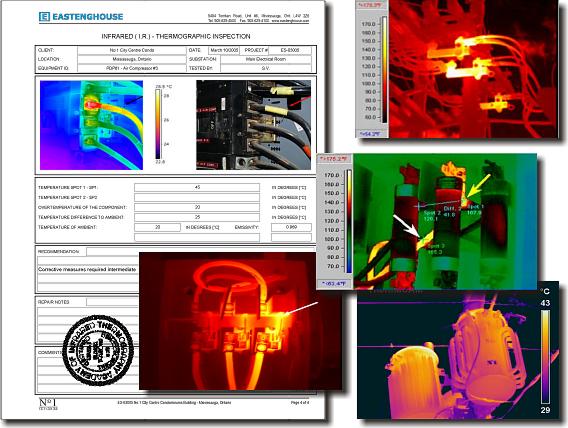Infrared Thermographic Inspection

Thermography identifies mechanical and electrical problems before they cause damage to equipment. By correcting any forseeable or predictable problems, failure can be prevented and repair costs may be reduced. Efficiency and energy saved, and risk management improved.
Thermography applications are endless. They indicate defective electrical connections, clogged lines, tank contaminants and defective insulation systems.
Some benefits of Thermography:
- Reduced chances for fire and other catastrophes
- Reduced repair and maintenance costs
- Reduced unscheduled shut downs
- Verification of repair work
An Infrared Electrical Equipment Inspection is performed while the electrical system is under normal load. This non-contact, non-destructive technique causes no disruption to the normal operating routine of the system being inspected. In a plant or commercial building, all of the electrical equipment, including switches, fuses, motor controllers, motors, transformers and drives can be quickly and effectively inspected for defective connections or malfunctioning components. Whenever the infrared inspection locates an over-heating item, its temperature is measured and priority for the severity of the problem is established. The identification of overheating problems permits early corrective measures to be implemented, thereby increasing safety, preventing costly equipment failures, reducing equipment downtime and eliminating potential fire hazards.



